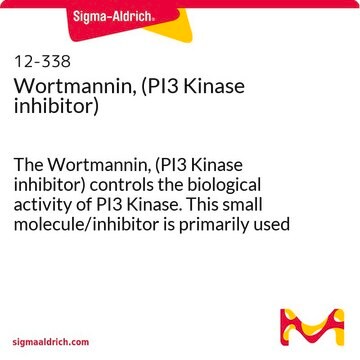56496
Calcein-AM
Small Package (20 X 50 μg ), ≥95.0% (HPLC)
Synonym(s):
Calcein O,O′-diacetate tetrakis(acetoxymethyl) ester, fluorescein complexone, Calcein O,O′-diacetate tetrakis(acetoxymethyl) ester
About This Item
Recommended Products
Quality Level
assay
≥95.0% (HPLC)
fluorescence
λex 496 nm; λem 516 nm±5 nm in 0.1 M Tris pH 8.0, esterase; Ca2+
storage temp.
−20°C
SMILES string
CC(=O)OCOC(=O)CN(CC(=O)OCOC(C)=O)Cc1c(OC(C)=O)ccc2c1Oc3c(CN(CC(=O)OCOC(C)=O)CC(=O)OCOC(C)=O)c(OC(C)=O)ccc3C24OC(=O)c5ccccc45
InChI
1S/C46H46N2O23/c1-25(49)60-21-64-39(55)17-47(18-40(56)65-22-61-26(2)50)15-32-37(68-29(5)53)13-11-35-43(32)70-44-33(16-48(19-41(57)66-23-62-27(3)51)20-42(58)67-24-63-28(4)52)38(69-30(6)54)14-12-36(44)46(35)34-10-8-7-9-31(34)45(59)71-46/h7-14H,15-24H2,1-6H3
InChI key
XKFSBWQWNMZWFA-UHFFFAOYSA-N
Looking for similar products? Visit Product Comparison Guide
General description
Application
Storage Class
11 - Combustible Solids
wgk_germany
WGK 3
flash_point_f
Not applicable
flash_point_c
Not applicable
Certificates of Analysis (COA)
Search for Certificates of Analysis (COA) by entering the products Lot/Batch Number. Lot and Batch Numbers can be found on a product’s label following the words ‘Lot’ or ‘Batch’.
Already Own This Product?
Find documentation for the products that you have recently purchased in the Document Library.
Customers Also Viewed
Articles
Sigma-Aldrich presents a Biofiles on Detect, Visualize and Quantify Single Post-Translational Modifications
Our team of scientists has experience in all areas of research including Life Science, Material Science, Chemical Synthesis, Chromatography, Analytical and many others.
Contact Technical Service








